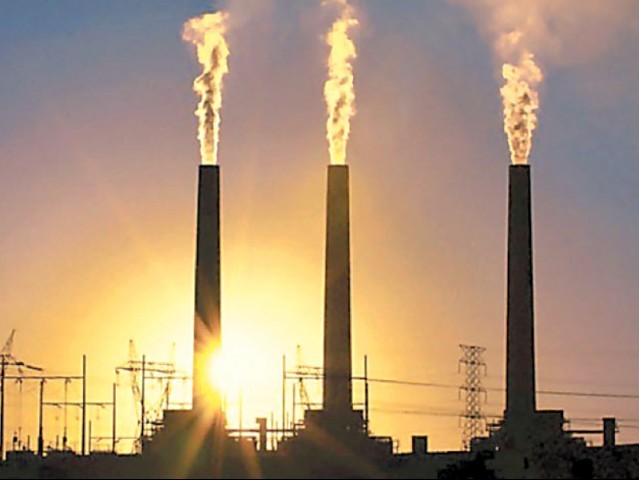ISLAMABAD: Power Division is all set to increase the use of furnace oil for power generation. As a result, power prices will witness an Rs3 per unit hike.
Official sources at the power division on condition of anonymity informed Pakistan Today that the ministry has handed over power sector’s RLNG requirement for the next four months to M/s Pakistan LNG Limited (PLL) and indicated a major reduction in the use of RLNG for power generation while opting for an increase in the use of furnace oil. They said that as per demand only 12 cargos of LNG will be imported by PLL in the next four months (September to December 2018) against the already agreed six cargos per month imports. As a result, a significant cut will be witnessed in the use of RLNG for power production, and hence the economy will face massive losses, said sources.
The sources also said that the decision of the power division to enhance the use of dirty and expensive fuel-furnace oil for power production instead of utilising cheap and clean fuel-Re-gasified Liquefied Natural Gas- will approximately cause more than Rs2 billion in losses to the country. They said that the increase in the use of furnace oil for power generation purposes will cause power tariff hike by Rs 3/unit, and due to this, expected increase in the price of per unit of power, the country is expected to face around Rs10 billion losses.
Furnace oil has strengthened its roots in the power division, said sources.
“Influential furnace oil lobby is greasing the palms of mighty ‘babu’s’ at the power division and as a result power division is set to increase the use of expensive, dirty furnace oil in power generation,” said sources.
An available copy of the official document has further revealed that the RLNG requirement for the upcoming months of September and October are to stand at 900 million cubic feet per day (MMCFD) respectively, and an 850 MCFD of RLNG requirement is indicated for November and December of 2018.
According to the document, in order to determine the demand of RLNG for upcoming months i.e., September to December 2018, a meeting was held in the power division on 13 August 2018. The power division was represented by JS (Power and Finance), CEO of Muzaffargarh and Jamshoro Power Plants and other relevant officials, while Director General (Gas), Director (Technical), Assistant Manager (Marketing) PLL, GM (Sales) SNGPL attended from the Petroleum Division. And, during the meeting, the Joint Secretary (JS P&F) indicated the RLNG requirement for power plants for the upcoming months.
It is relevant to mention that earlier M/s PLL has sought from the power division to determine the demand of RLNG for upcoming months i.e., September to December 2018 through a letter No. PLL/DG(Gas)/2018/08/09 dated 9 August 2018, And, JS (P&F) of power division indicated the future decrease in RLNG demand of the country’s power sector to PLL in a meeting held on 13 August 2018.
Sources also said that due to less demand by the power sector, the terminal capacity of the second LNG terminal is being underutilised while capacity charges are continuously being paid to PGPC for its LNG terminal.
The terminal charges in respect of the second LNG terminal comprise two major components which include fixed (capacity charges) and variable (utilisation and flexibility charges). The sources informed that the capacity charges for any infrastructural project are linked directly with the cost of setting-up the infrastructure and are payable regardless of its utilisation.
Similarly, the per unit impact of such charges increases in case of a reduction in the quantity handled. Therefore, reduced LNG imports at the second LNG terminal is causing an increase in the per unit price of the terminal i.e. due to fixed cost / capacity charges, said sources.
It is also learnt that PLL informed all the stakeholders in the LNG supply chain that it will only be able to arrange additional LNG cargoes if ordered at least one hundred twenty (120) days prior to the date it is required to be delivered. However, the ministry has directed PLL not to order any LNG import until and unless there is a firm demand from SNGPL / Power Division of Ministry of Energy. Therefore, any shortfall in LNG imports is certainly a result of lack of firm demand from the downstream consumers i.e. primarily power sector. This whole situation is also sensitive to Pakistan’s currency reserves and payment issues encompassing the power sector. However, PLL had informed the Ministry of Energy that the entire supply chain and multi-billion-dollar investment initiative was expressly setup to solve the country’s energy and gas crises. The recent developments have the potential to derail this well-thought-out and essential policy initiative as it opens the way for deficiencies in energy / gas.
Natural Gas accounts for approximately 40 to 45 per cent of the total primary energy supply mix of the country. Although the demand for natural gas has increased due to growth in the consumer base, indigenous gas reservoirs continued to deplete, resulting in an imbalance between demand and supply. Due to a demand-supply gap of 2 bcfd (constrained) to 4 bcfd (unconstrained) the country has been consuming electricity generated by furnace oil which is less efficient and more costly.
The non-utilisation of gas fired power plants has had a negative impact on industrial units and resulted in an almost a complete shut down of the textile and CNG industry in Pakistan. Due to the shortage of natural gas, Pakistan went from being an exporter of fertiliser to being an importer. This shortage of natural gas also led to severe unemployment in the country. Liquefied Natural Gas (LNG) imports were initiated to bridge the increasing demand and supply gap.
To effectively manage the LNG supply chain in the country, the Government of Pakistan (GOP) decided to establish “Pakistan LNG Limited” to import LNG to meet the natural gas requirement of the country. Soon after its incorporation, Pakistan LNG Limited (PLL) inked LNG Supply agreements through transparent international competitive bidding and the price of LNG under these agreements is amongst lowest in the world. PLL has now developed a lean and transparent LNG procurement process, which takes approximately 90 – 120 days from start to finish, and this process ensures the price of LNG is as competitive, if not better, than market-based prices. PLL further aims to ensure the availability of environment friendly fuels at the lowest possible prices by engaging the global leaders in the LNG supply, which will also play an important role in energy security for the country.
It is worth mentioning here that LNG imports have been enabling Pakistan to save approximately $2 billion to $3 billion annually in the import bill by replacing furnace oil based electricity generation. The imported LNG is being fed to the natural gas fired power plants which operate at a thermal efficiency of 60 per cent.
Furnace oil based power plants’ thermal efficiency averages 30 to 40 per cent. The use of combined cycle gas turbines (CCGT) in power plants has promoted the use of natural gas for power generation around the globe and now Pakistan is also equipped to produce the most efficient thermal based power generation by setting up two LNG terminals at Port Qasim and three new gas fired power plants with CCGT. Further, natural gas is not only the cleanest fossil fuel, making LNG the best option for the environment, it is also an efficient fuel, making it an ideal addition to the energy mix. Import of LNG has also revived the textile sector and CNG sector of Pakistan thereby creating numerous job opportunities.
The shortage of natural gas caused Pakistan to import fertiliser worth approximately $1.5 billion. Pakistan’s fertiliser industry is being revived with the use of imported LNG. Following the footsteps of the Government of Pakistan, some of the local manufacturers of fertilisers are also conducting feasibility studies for setting up their own private LNG terminals for the utilisation of imported LNG in fertiliser production.
























